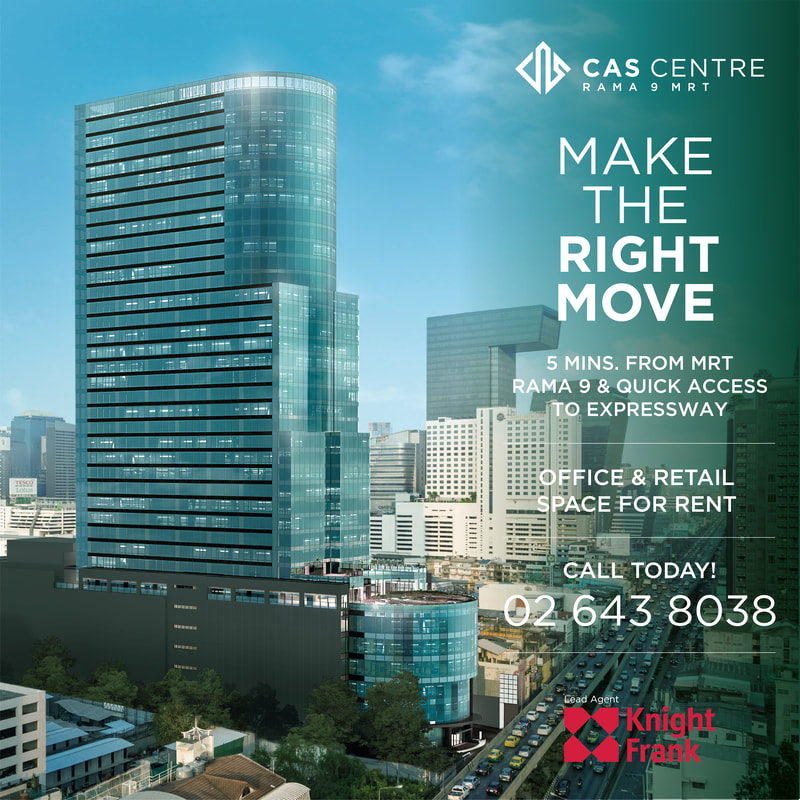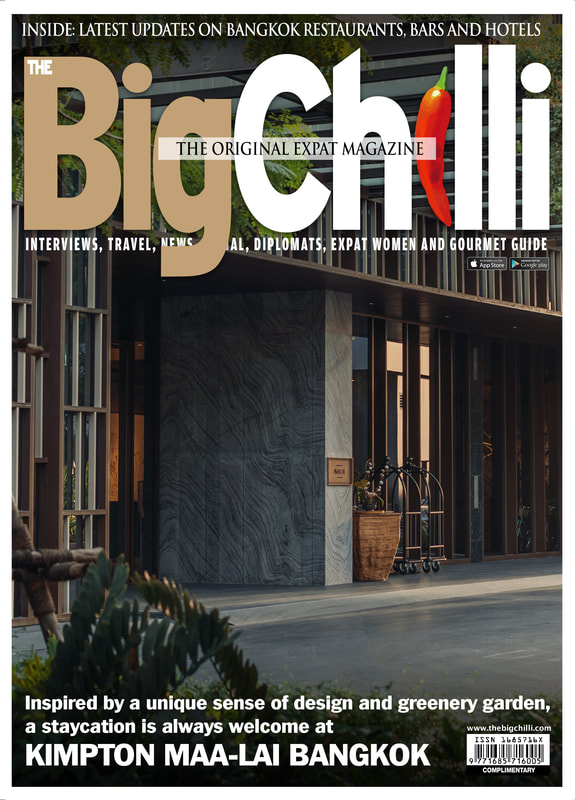Diplomats: H.E. Andelfo Garcia
Words MAXMILIAN WECHSLER
| HIS Excellency Andelfo Garcia began his term in April 2013. Since then the Colombian Ambassador to Thailand and his wife Astrid, who was present during the interview, have become a highly visible and respected duo in the local diplomatic community. They were both delighted when they learned that Mr Garcia had been chosen to head the embassy here and have thoroughly enjoyed their time in the Kingdom. “We don’t know yet when my term in Thailand will end. We could be here for another few months or maybe a year; we are definitely not in a hurry to leave,” said Mr Garcia at the couple’s residence on the 64th floor of a high-rise in central Bangkok. “Before I took my ambassadorial post, my family visited Thailand for the first time as tourists in 2007. I had travelled in Asia, to China, India, Korea and Japan, but it was my first time in Southeast Asia. There were many surprises waiting for me here and I learned a lot about Thailand during that trip. However, after I arrived in 2013 to take my post I realised that Thailand had seen many changes since the visit in 2007. First of all, Bangkok now seems even more modern and vibrant. There are more activities going on, more tourists everywhere and lots of economic development. I could see many positive changes, especially in terms of economy, infrastructure and public services. |
“The dynamism of Thailand is very evident. Everything is working well here and that’s a big reason why tourists keep coming in bigger numbers. Of course, Thailand is a nice place to be for other reasons. Thai people are polite, welcoming and very warm. When friends visit us in Bangkok they always comment on this. And there is so much natural beauty here. All this is perfect for tourism. It seems to me that the Thai people are not fully aware of how positively their country is seen from the outside.
“I have had so many memorable experiences since taking my post, and met so many interesting locals, whether government officials, business people, artists or people from the cultural and sports worlds. Thanks to the nature of the job we have the chance to meet people from every corner of society. This presents a great opportunity to learn about the country, and making friends from different sectors of Thai society helps a lot in my work.
“Thailand is a country full of life so vibrant and so much activity everywhere. I was pleasantly surprised to learn that Bangkok is an easy city to live in. I have found that big cities around the world are usually difficult to live in. But even though Bangkok has a population of around 10 million people, it is relatively easy to adjust and get around. I also feel that there is a very good level of security and safety in Bangkok. You feel comfortable, and this is very important in my work. The only difficulty we face here – and this applies to large cities around the world – is the traffic.”
Travelling man
The Colombian embassy in Bangkok is located on the 18th floor of Athenee Tower on Wireless Road. Including the ambassador, it has a staff of five Colombian diplomats and six local personnel. “I am also ambassador to Cambodia, Laos and Myanmar and therefore I often travel to Phnom Penh, Vientiane and Naypyidaw.
“I also frequently travel throughout Thailand. I’ve often been to Chiang Mai, Chiang Rai, Phuket, Hua Hin and many other cities. The Thai Ministry of Foreign Affairs [MFA] generously organises trips for foreign diplomats so we have a chance to visit various provinces. Members of the diplomatic community are often accompanied by the Minister of Foreign Affairs or the Minister of Tourism and Sports on these trips. This is such a diverse country and it’s great to have a chance to experience the atmosphere of the small towns as well as the larger urban centres.
“Many people at the Thai MFA’s Americas and South Pacific Division can speak Spanish, and this makes life easier for me and my colleagues from Latin American countries. We have a small group called GRULAC consisting of diplomats from Argentina, Brazil, Chile, Colombia, Cuba, Mexico, Panama and Peru. When we meet, we usually converse in Spanish, although of course, the native language of Brazil is Portuguese. We usually invite the ambassadors of Portugal and Spain to GRULAC,” said the ambassador, adding that there is a total of 33 countries in South America including the Caribbean, but most don’t have embassies in Thailand.
Mr Garcia noted that the time difference between Thailand and Colombia is 12 hours, giving him a window of opportunity for communication with his government from 6 pm until midnight Bangkok time.
“I have had so many memorable experiences since taking my post, and met so many interesting locals, whether government officials, business people, artists or people from the cultural and sports worlds. Thanks to the nature of the job we have the chance to meet people from every corner of society. This presents a great opportunity to learn about the country, and making friends from different sectors of Thai society helps a lot in my work.
“Thailand is a country full of life so vibrant and so much activity everywhere. I was pleasantly surprised to learn that Bangkok is an easy city to live in. I have found that big cities around the world are usually difficult to live in. But even though Bangkok has a population of around 10 million people, it is relatively easy to adjust and get around. I also feel that there is a very good level of security and safety in Bangkok. You feel comfortable, and this is very important in my work. The only difficulty we face here – and this applies to large cities around the world – is the traffic.”
Travelling man
The Colombian embassy in Bangkok is located on the 18th floor of Athenee Tower on Wireless Road. Including the ambassador, it has a staff of five Colombian diplomats and six local personnel. “I am also ambassador to Cambodia, Laos and Myanmar and therefore I often travel to Phnom Penh, Vientiane and Naypyidaw.
“I also frequently travel throughout Thailand. I’ve often been to Chiang Mai, Chiang Rai, Phuket, Hua Hin and many other cities. The Thai Ministry of Foreign Affairs [MFA] generously organises trips for foreign diplomats so we have a chance to visit various provinces. Members of the diplomatic community are often accompanied by the Minister of Foreign Affairs or the Minister of Tourism and Sports on these trips. This is such a diverse country and it’s great to have a chance to experience the atmosphere of the small towns as well as the larger urban centres.
“Many people at the Thai MFA’s Americas and South Pacific Division can speak Spanish, and this makes life easier for me and my colleagues from Latin American countries. We have a small group called GRULAC consisting of diplomats from Argentina, Brazil, Chile, Colombia, Cuba, Mexico, Panama and Peru. When we meet, we usually converse in Spanish, although of course, the native language of Brazil is Portuguese. We usually invite the ambassadors of Portugal and Spain to GRULAC,” said the ambassador, adding that there is a total of 33 countries in South America including the Caribbean, but most don’t have embassies in Thailand.
Mr Garcia noted that the time difference between Thailand and Colombia is 12 hours, giving him a window of opportunity for communication with his government from 6 pm until midnight Bangkok time.
| Trade and tourism Ambassador Garcia said that the total Colombian exports in 2016 amounted to US$31 billion, with imports of US$45 billion. It’s estimated that trade volume will grow by 2.2 percent in 2017. “Colombia is the biggest producer of coal in Latin America and produces a lot of iron as well, but about 85 percent of foreign investment in the country is in sectors other than energy and mining.” According to documents received from Mr Garcia, in 2016 foreign direct investment exceeded US$8.3 billion which placed the country as one of the 25 largest recipients of this kind of investment in the world and second largest economy in South America and fourth largest in Latin America with the best growth projection. |
Also, in 2016, nearly 2,100 new companies were established in Colombia and 853 new goods were sold in the international market. This was responsible for the generation of nearly US$2.3 billion in foreign exchange.
“A number of exports from Thailand to Colombia is now more than US$250 million, and from Colombia to Thailand it’s somewhere around US$100 million, depending on the price of oil. In 2016 we sold over US$40 million worth of crude oil to Thailand, brought by tanker ships. We also export leather and precious stones. Colombian emeralds are highly appreciated here. To a lesser extent, we export fertilisers and other agricultural products. Colombia imports import auto parts, electronics, washing machines and tires for motor vehicles from Thailand.
“There are numerous similarities between our two countries in terms of economics, although Colombia has a lower GDP, around US$300 billion in 2016, compared to about US$400 billion for Thailand. But although Colombia is about twice the size of Thailand, the population is much smaller, 49 million compared to 65 million.
“There have been more than 30 visits from Colombians representing individual companies while I have been here. Recently there was a visit by the owners of a restaurant chain specialising in Thai food. They now have 40 Thai restaurants in Bogota. The purpose of the trip was to make contact with culinary schools here and bring Thai chefs to Colombia. Thai food is very popular in Colombia. People love it. The restaurants are growing some of the ingredients. They bring seeds from Thailand. There are also visits from Thai business people to Colombia. Every year, the Thai Ministry of Commerce organises a trip for foreign business interests.
In the field of tourism, Colombia reached the record figure of nearly 4.5 million of foreign visitors in 2016, generating about US$5.2 billion in revenue and nearly two million jobs in this sector. Almost 400 Thais came to Colombia in 2016, double the number in 2013. An increasing number of Colombians are visiting Thailand as well. When I came the annual figure was about 8,000; last year it was 12,000.
“About 300 Colombians reside in Thailand. Most of them live in Bangkok and are executives at international companies involved in oil, real estate or construction. Some are teachers at international schools. The number of Colombians here is small, but they are well integrated into key sectors of the economy.
“Early on in my assignment here we eliminated visa requirements for Thai diplomats and also negotiated the exemption of visa requirements for holders of Cambodian and Myanmar diplomatic visas. My government also made a decision to eliminate visa requirements for Thai citizens who have been granted a US or Schengen visa.”
Putting FARC to rest
Mr Garcia said that probably the most momentous development for his country in recent years has been the successful culmination of the peace process between the Colombian government and FARC, the Revolutionary Armed Forces of Colombia. “The process is highly recognised worldwide as a big success for peace. The conflict has been going on for 50 years, starting in the Cold War era.
“In the past five years, there has been a very active process of negotiation. The first phase of the process was secret and the second phase is public. Many issues of the agreement are very important for the future, including with regard to rural reforms, economic adjustments, security and especially the eradication of illegal drugs. Drug trafficking has been a major source of funding and weapons and other equipment for FARC, but no more,” said the ambassador.
“At this moment the membership of FARC numbers about 7,000 people, located at 27 places throughout of the country. At present they are still armed, but they are accompanied and supervised by monitors from the international community and the government. Bringing the FARC members to these 27 locations and set up the monitoring process has been very successful. Before the agreement was reached FARC guerrillas were stationed at around 200 different places. They came from the jungles in every corner of the country.
“It was a huge logistical endeavour to build the residences and other buildings for them and set up services, including meals and medical assistance. The Colombian government arranged for 7,000 guerrillas to be supplied with everything they need. It was a big challenge and it had to be done very quickly to comply with the road map for peace.
“The biggest priority now is to see the 7,000 FARC members give up their weapons as they have promised. After 50 years of fighting this is a very big step, and it involves preparations for a transition period to allow them to become regular citizens and adapt their political struggle through democratic means if they wish to do so.
“The weapons will be collected from the guerrillas by United Nations representatives and they will be destroyed at several places. Some weapons will be used in sculptures like the one at the front of UN headquarters in New York known as ‘the knotted gun’.
“One of the big challenges for the government is to study and learn from other successful peace processes, for example in Central America, Northern Ireland and South Africa. It involves finding the truth about what happened and establishing a working system for justice. We must have a commitment from the guerrillas not to repeat their illegal activities, but also a commitment from all actors involved in the internal conflict.
“We have a long record of democracy in Colombia. There was a four-year period in the 1950s when the country was not democratically governed, but for almost 60 years since then, the country has had a working democracy. The FARC guerrillas started their insurgency started during the Cold War and have communist origins. They were inspired by communist groups that followed the former Soviet Union and Chinese Maoists. These groups are not in Latin America anymore. FARC raised funds from drug-related activities, but this has now been stopped completely,” said the ambassador.
“You can already see a big change in the country due to the peace negotiation. A few years ago we attracted only one or two million tourists, but in 2016 there were about 4.5 million tourists. We are ready to welcome much more. The tourism sector is a big priority for my government, and in order to develop it we need tranquillity and safety.”
“A number of exports from Thailand to Colombia is now more than US$250 million, and from Colombia to Thailand it’s somewhere around US$100 million, depending on the price of oil. In 2016 we sold over US$40 million worth of crude oil to Thailand, brought by tanker ships. We also export leather and precious stones. Colombian emeralds are highly appreciated here. To a lesser extent, we export fertilisers and other agricultural products. Colombia imports import auto parts, electronics, washing machines and tires for motor vehicles from Thailand.
“There are numerous similarities between our two countries in terms of economics, although Colombia has a lower GDP, around US$300 billion in 2016, compared to about US$400 billion for Thailand. But although Colombia is about twice the size of Thailand, the population is much smaller, 49 million compared to 65 million.
“There have been more than 30 visits from Colombians representing individual companies while I have been here. Recently there was a visit by the owners of a restaurant chain specialising in Thai food. They now have 40 Thai restaurants in Bogota. The purpose of the trip was to make contact with culinary schools here and bring Thai chefs to Colombia. Thai food is very popular in Colombia. People love it. The restaurants are growing some of the ingredients. They bring seeds from Thailand. There are also visits from Thai business people to Colombia. Every year, the Thai Ministry of Commerce organises a trip for foreign business interests.
In the field of tourism, Colombia reached the record figure of nearly 4.5 million of foreign visitors in 2016, generating about US$5.2 billion in revenue and nearly two million jobs in this sector. Almost 400 Thais came to Colombia in 2016, double the number in 2013. An increasing number of Colombians are visiting Thailand as well. When I came the annual figure was about 8,000; last year it was 12,000.
“About 300 Colombians reside in Thailand. Most of them live in Bangkok and are executives at international companies involved in oil, real estate or construction. Some are teachers at international schools. The number of Colombians here is small, but they are well integrated into key sectors of the economy.
“Early on in my assignment here we eliminated visa requirements for Thai diplomats and also negotiated the exemption of visa requirements for holders of Cambodian and Myanmar diplomatic visas. My government also made a decision to eliminate visa requirements for Thai citizens who have been granted a US or Schengen visa.”
Putting FARC to rest
Mr Garcia said that probably the most momentous development for his country in recent years has been the successful culmination of the peace process between the Colombian government and FARC, the Revolutionary Armed Forces of Colombia. “The process is highly recognised worldwide as a big success for peace. The conflict has been going on for 50 years, starting in the Cold War era.
“In the past five years, there has been a very active process of negotiation. The first phase of the process was secret and the second phase is public. Many issues of the agreement are very important for the future, including with regard to rural reforms, economic adjustments, security and especially the eradication of illegal drugs. Drug trafficking has been a major source of funding and weapons and other equipment for FARC, but no more,” said the ambassador.
“At this moment the membership of FARC numbers about 7,000 people, located at 27 places throughout of the country. At present they are still armed, but they are accompanied and supervised by monitors from the international community and the government. Bringing the FARC members to these 27 locations and set up the monitoring process has been very successful. Before the agreement was reached FARC guerrillas were stationed at around 200 different places. They came from the jungles in every corner of the country.
“It was a huge logistical endeavour to build the residences and other buildings for them and set up services, including meals and medical assistance. The Colombian government arranged for 7,000 guerrillas to be supplied with everything they need. It was a big challenge and it had to be done very quickly to comply with the road map for peace.
“The biggest priority now is to see the 7,000 FARC members give up their weapons as they have promised. After 50 years of fighting this is a very big step, and it involves preparations for a transition period to allow them to become regular citizens and adapt their political struggle through democratic means if they wish to do so.
“The weapons will be collected from the guerrillas by United Nations representatives and they will be destroyed at several places. Some weapons will be used in sculptures like the one at the front of UN headquarters in New York known as ‘the knotted gun’.
“One of the big challenges for the government is to study and learn from other successful peace processes, for example in Central America, Northern Ireland and South Africa. It involves finding the truth about what happened and establishing a working system for justice. We must have a commitment from the guerrillas not to repeat their illegal activities, but also a commitment from all actors involved in the internal conflict.
“We have a long record of democracy in Colombia. There was a four-year period in the 1950s when the country was not democratically governed, but for almost 60 years since then, the country has had a working democracy. The FARC guerrillas started their insurgency started during the Cold War and have communist origins. They were inspired by communist groups that followed the former Soviet Union and Chinese Maoists. These groups are not in Latin America anymore. FARC raised funds from drug-related activities, but this has now been stopped completely,” said the ambassador.
“You can already see a big change in the country due to the peace negotiation. A few years ago we attracted only one or two million tourists, but in 2016 there were about 4.5 million tourists. We are ready to welcome much more. The tourism sector is a big priority for my government, and in order to develop it we need tranquillity and safety.”
|
Ambassador’s top ten list Ambassador Garcia prepared a list of the 10 most important areas of Thai-Colombian cooperation during his posting in Thailand: 1. Colombian President Santos and Thai Prime Minister Prayuth Chan-o-cha had a bilateral meeting in Manila in 2015, on the sidelines of the APEC CEO Summit in the Philippines. 2. The Foreign Minister of Colombia, Maria Angela Holguin, visited Bangkok in July 2013. 3. A total of 22 Thai tourist guides has studied Spanish at Colombia universities with full scholarships from the government of Colombia. 4. A MoU on Tourism of Wellness was signed by Ministers of Tourism of Colombia and Thailand in Medellin in September 2015. Thailand International Cooperation Agency (TICA) and PROCOLUMBIA (Export Tourism Investment Country Brand) celebrated five activities of cooperation in the exchange of knowledge on tourism promotion. 5. A total of 12,000 Colombians visited Thailand in 2016, representing an increase of 77 percent since 2012. The number of Thais visiting Colombia increased by 175 percent in the same period. 6. In the last five years, a total of 30 Thai children has lived with Colombian families for a year under AFS interchange programs. 7. Visa waiver for Thais travelling to Colombia who holds a US or Schengen visa. Holders of Diplomatic and Official Passports from both countries can also travel without a visa. 8. A MoU on political consultations was signed on 2013 and the 1st Meeting on Bilateral Consultations was held in Bogota in October 2014 with the presence of the Director of America of Thai Foreign Ministry and Director of TICA. 9. Thailand and Colombia have exchanged support for more than ten candidates for office in multilateral organisations. 10. Trade between Colombia and Thailand is growing very fast. Three commercial missions of Thai businessmen have visited Colombia, and more than 30 Colombian companies have visited Thailand with the purpose of exploring business opportunities. |
Interview with Astrid Garcia
She doesn’t have an official position with the Colombian mission here, but Astrid Garcia is an effective representative of her country in her own right. Besides helping her husband at various diplomatic activities like lunches, dinners and receptions, she is very active in other social and charity events. She is a key member of a group of ambassadors’ spouses as well as the Young Woman’s Christian Association. Like her husband, she is impressed with the rapid development in Thailand and Bangkok in particular. “There are so many new high-rises and shopping malls. If you come to Thailand as a tourist for a short period of time you see it very differently than if you live here. I love living here. The people are so nice to us. “I am busy all the time. There are diplomatic functions going on almost daily and I really enjoy participating. In addition, we often invite guests to our residence or we accept invitations from various people. This is my life mainly in the evenings and night. During the day I work for my company. It’s a family operation called AOTA which creates marketing campaigns for corporations, countries and cities with the use of interactive art. Company headquarters is in the US. These days it’s easy to stay in control of a business no matter where you are.” |
Mrs Garcia said that since coming to Thailand she’s collected a great many memories that are all special to her, but the passing of His Majesty King Bhumibol Adulyadej was the most emotional experience.
“To be a wife of an Ambassador we have been married for 42 years is a great opportunity to enjoy different cultures and meet interesting people. In Thailand, we have been invited to lunches and dinners and other functions where we were the only foreigners. We now have a very big circle of Thai friends – among them academics, politicians, business people and many others. I travel often to the provinces to experience local customs and cuisines.
“I am in a group called Thailand Women’s Leaders, made up of 14 Thai women and myself. We meet once a month at our residence for dinner. The women represent many professions. We are a diverse group and we’ve all become good friends.”
Mrs Garcia’s refreshing cross-cultural balance is reflected in her dress as well as her social life. She was wearing beautiful earrings and matching necklaces of Colombia Indigenous design made in Colombia to accessorise a lovely traditional Thai-style dress.
“To be a wife of an Ambassador we have been married for 42 years is a great opportunity to enjoy different cultures and meet interesting people. In Thailand, we have been invited to lunches and dinners and other functions where we were the only foreigners. We now have a very big circle of Thai friends – among them academics, politicians, business people and many others. I travel often to the provinces to experience local customs and cuisines.
“I am in a group called Thailand Women’s Leaders, made up of 14 Thai women and myself. We meet once a month at our residence for dinner. The women represent many professions. We are a diverse group and we’ve all become good friends.”
Mrs Garcia’s refreshing cross-cultural balance is reflected in her dress as well as her social life. She was wearing beautiful earrings and matching necklaces of Colombia Indigenous design made in Colombia to accessorise a lovely traditional Thai-style dress.
|
Background of H.E. Andelfo Garcia
Education • New York University, MA Latin American and Caribbean Studies, New York, USA (1981) • The National University of Colombia, Doctor of Law, Social and Political Sciences, Faculty of Law, Bogota, Colombia (1977) Assignments and positions • Member of the legal team of Colombia before the International Court of Justice in the cases: Nicaragua vs Colombia (2001-2012 and 2013-2017) and Ecuador vs Colombia (2008-2012). • Member of the “Centro de Pensamiento Estrategico”, a think tank established by the Ministry of Foreign Affairs (MFA) of Colombia to assess the international situation and build scenarios on future developments (2011-2012). • Deputy Head of Mission of the Republic of Colombia to the United Kingdom, London (2008-2009). • Deputy Chief of Mission of the Republic of Colombia to Spain, Madrid (2006-2007) • Ambassador Deputy Permanent Representative of Colombia to the UN (1994-1998). An expert on disarmament matters. Responsible for the Coordinating Bureau of the Non-Aligned Movement (NAM) in New York during the three-year chairmanship of Colombia (1995-1998). • Chairman of the United Nations Disarmament Commission 1997. • Member of the Advisory Board of the Secretary-General of the UN on Disarmament Matters (1997-1998). • Vice-Chair of the Second PrepCom for the 2000 Review Conference of the Non-Proliferation Treaty (1998). • Vice-Chair of the First Committee of the General Assembly of the UN-Disarmament and International Security (1997). • Deputy MFA of Colombia (1992-1994). • Member of the negotiating team of Colombia for the maritime delimitation with Jamaica. Delimitation Treaty ratified in 1994. In charge of policy-making of Colombia on the Caribbean Basin, including the establishment of the Association of Caribbean States in 1994. Co-directed the design of the new structure for the MFA of Colombia in 1993, by which the ministry was organised along geographical as well as thematic lines. Advisory roles • Corporacion Andina de Fomento, Consultant. Support for the participation of Colombia as a member of de UNSC (2011-2012). • Inter-American Development Bank. Consultant (2000-2001). Reform and enhancement of the Diplomatic Academy of the MFA of Colombia. • Corporacion Andina de Fomento. Consultant (2001). Member of Colombia’s National Group (at the MFA) in charge of the issue of “Humanitarian Intervention”. Academic position • University of California, Berkeley. Professor at LAS-Latin American Studies. Course, “The Colombian Conflict: Past and Present.” LAS 240, Spring 2002. • Columbia University. (ILAS). Visiting Scholar. Research projects and papers: “The Bureaucratic Politics of Plan Colombia”. “The Regional Crisis: the real threat”. New York (2000-2001). • Universidad Externado de Colombia. Professor of Public International Law at the Faculty of Finance, Government and International Relations (1988-1993, 1999, 2002-2004). • Vice-Dean of the Faculty of Finance and International Relations at the Externado de Colombia University (1986-1992). Participated in the creation of the Faculty, including the formulation of curricula. • Researcher and Professor of Public International Law at the Universidad de Los Andes, Bogota, Colombia (1982-1985). |

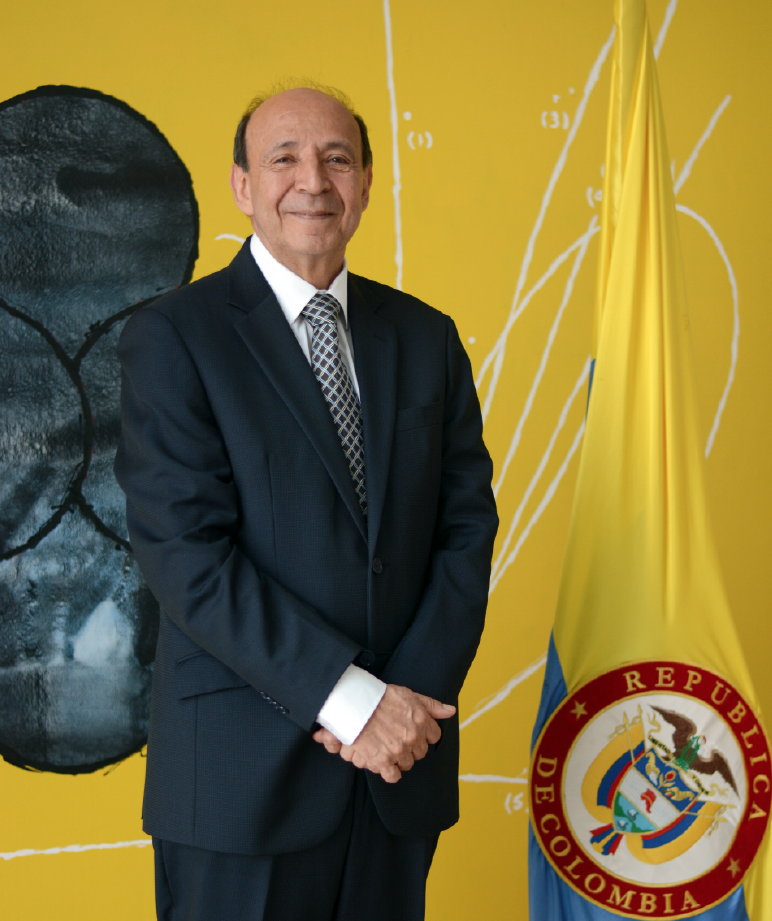
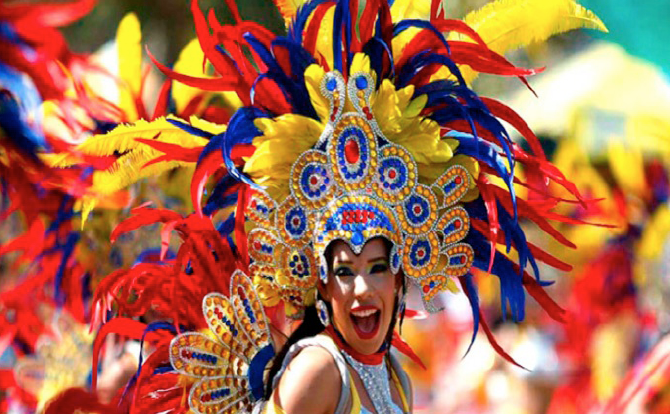
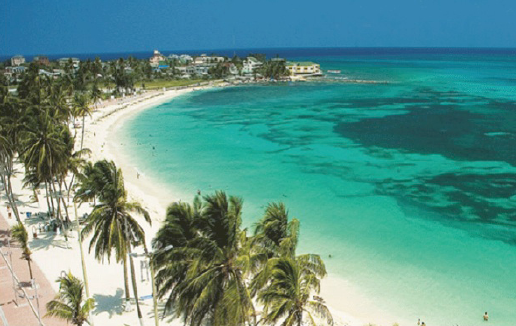
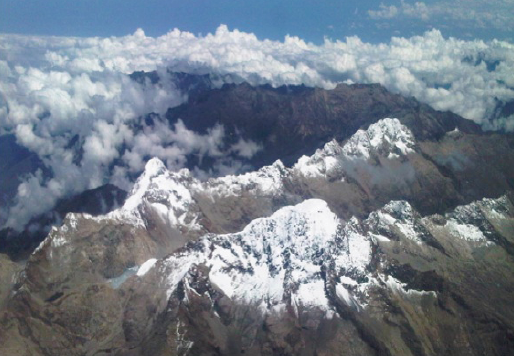
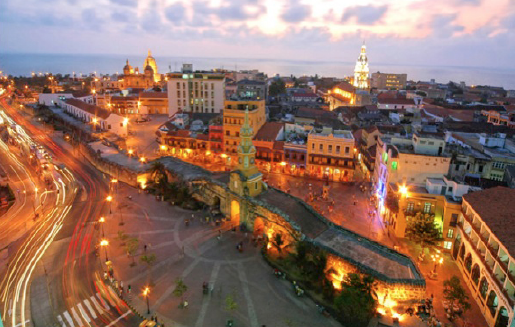
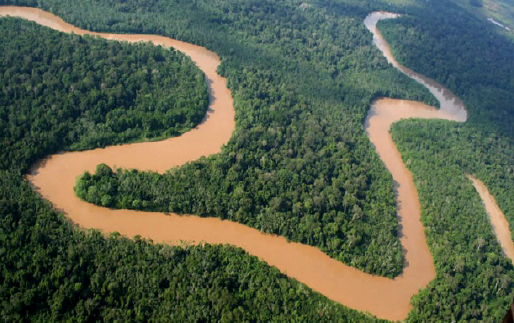
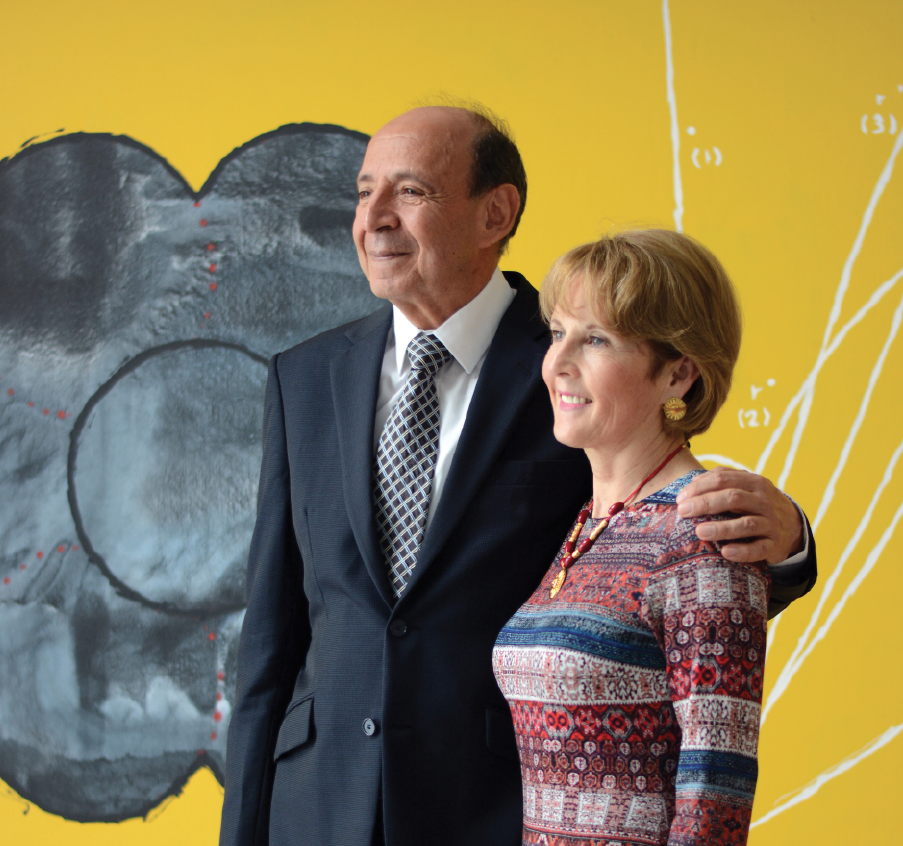
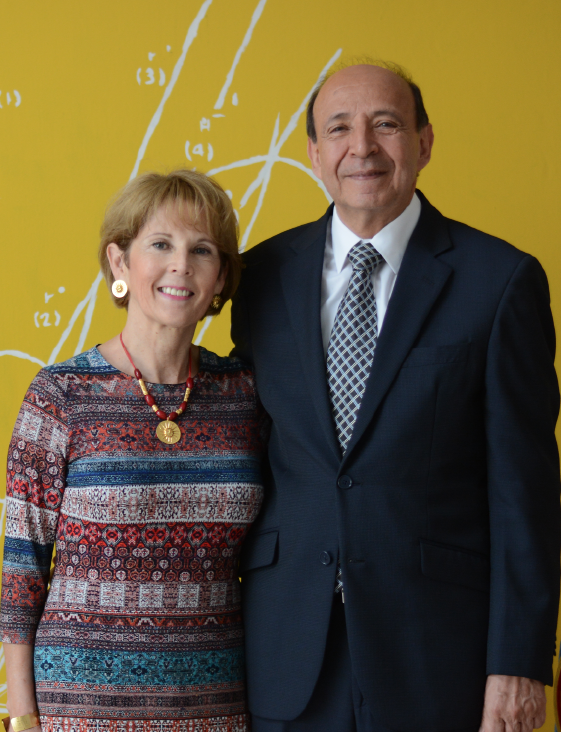
 RSS Feed
RSS Feed
